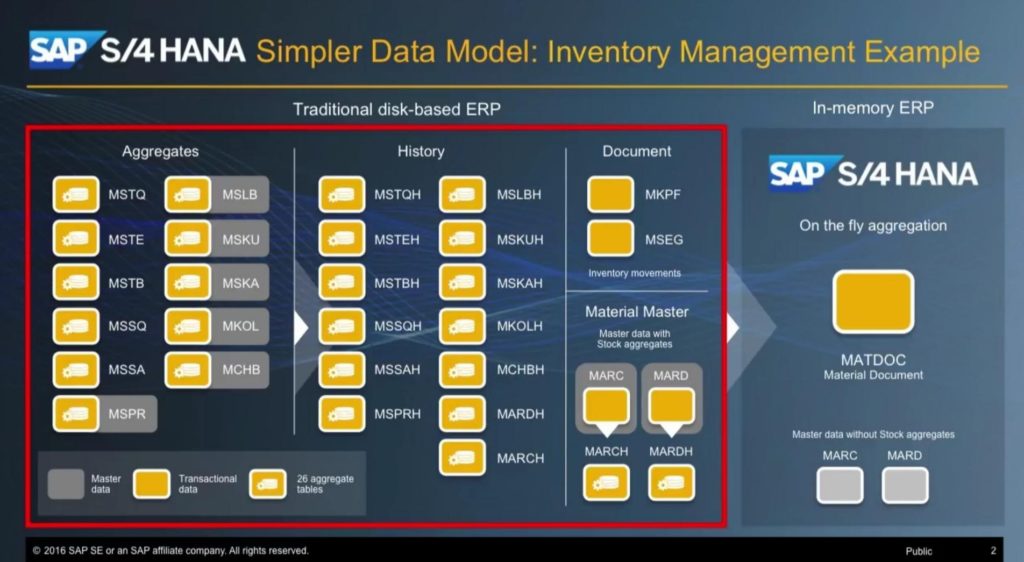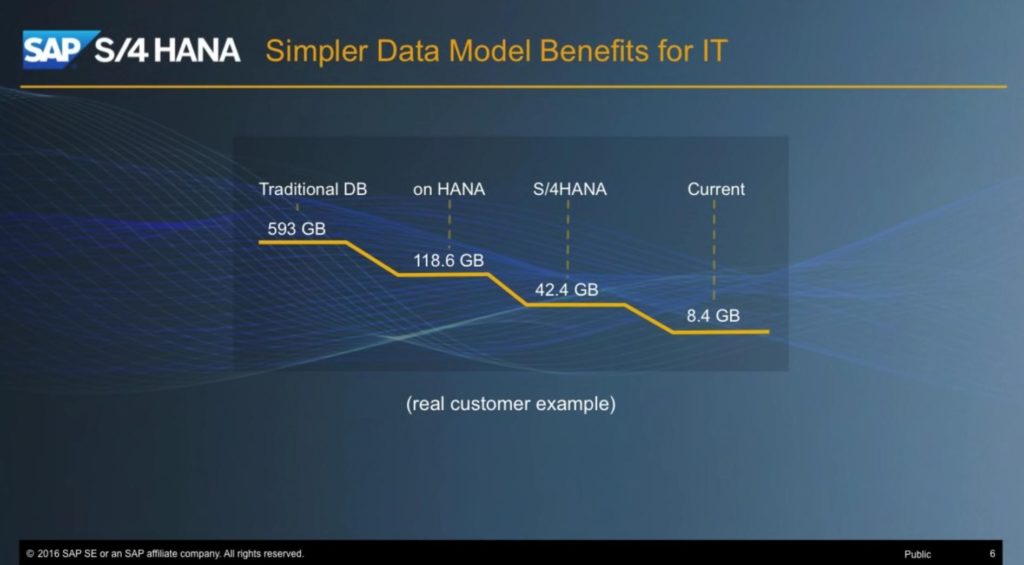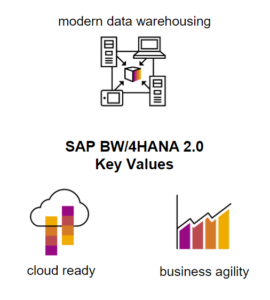Managing Complex Data Landscapes
SAP HANA ticks all the boxes for manageability, speed and usability
SAP HANA (high-performance analytic appliance) is an application produced by SAP, a European multinational software corporation that makes enterprise software to manage business operations and customer relations.
One of its main features is that it uses in-memory database technology that can rapidly process massive amounts of real-time data (aka Big Data). It also has the flexibility that allows for specific applications that are suitable for particular requirements.
Faster, better data processing
SAP HANA has been a game-changer in the field of data processing on several levels, which explains why SAP products are used for management decision making and planning by some of the world’s largest companies, including Coca Cola, Volkswagen, BHP Bilton and Unilever.
Using a column-based database architecture, it has enabled data storage to move away from disks to RAM, which has speeded up data processing. Moreover, on the security side of data storage, thanks to the advent of non-volatile RAM, there is no longer the risk of an organisation losing valuable stored data due to a power outage.
When one thinks of the sheer volume of data that SAP HANA can process in real-time, it’s useful to think back to how things used to need to be done.
In the past, a large volume of data would have needed to be processed on a separate system. It was the conclusions generated by this initial procedure that would then be used to make predictions and produce plans and forecasts. Plus, inevitably, the impact of post-cut off point data could not have been included, which may have affected the reliability of decision making.
Now with SAP HANA, this entire process can be achieved within a single system in a faster, more cost-effective manner, with forecasts and plans constantly being updated with real-time data from multiple sources.
Another major change with SAP HANA is how it is now also being used by medium size organisations, that nevertheless need to process large volumes of data.
Bold Shore’s expertise is to support their clients getting the very best from SAP HANA thanks to particular applications for specific requirements.
S4/HANA now serving Spar Group Business sector: supermarket franchise

- Functional benefit thanks to the way customers and vendors are now managed with SAP Business Partner and SAP Credit Management
- Reporting benefit as in-memory provides a platform that can perform Big Data reporting for consolidation
S/4 HANA: a simpler data landscape
S/4 HANA is SAP’s next generation ERP (Enterprise Resource Planning) for large enterprises, optimized for SAP’s in-memory database. This means that S/4 HANA needs to run on the HANA in-memory platform. This has a major advantage for large enterprises: a massively simplified and lighter data landscape for ERP

In the image above, on the left is SAP inventory management that runs on a legacy database. Twenty-six tables are needed, most of them are indices and aggregates for lookups and analytics — a rather typical situation for traditional database systems. Moreover, its complexity grows in line with the ERP.
HANA is completely different. It uses columnar instead of rows store and runs with the speed of in-memory, with inventory management down to one table because HANA does not need redundant data to perform in real time.
And if scaled out beyond an inventory, it yields a far lighter data model, making life simpler for IT and freeing up resources to boost business productivity.

An important take-away is why S/4 needs to run on HANA. Granted, the benefits of in-memory can be brought to a legacy database system, but the problem in this situation is that the complex data landscape with all those tables has not actually changed.
HANA is the only ERP built to leverage the combination of columnar and in-memory for one data store, dramatically reducing complexity and increasing productivity (no redundant data, no locking, no granularity, etc).
On the finance and accounting front, other benefits include financial close simplicity because financial data is unified in a single data store. Also, the system allows for the generation of soft closes at any time for simulation purposes and a better user experience involving the ability to highlight specific subject areas without needing to export data to spreadsheets.
Other business areas that can benefit as above with S/4 HANA include:
- Human Resources
- Sourcing and Procurement
- Supply Chain
- Manufacturing
- Marketing and Commerce
- Sales
- Service
- Asset Management
- Research and Development
A final key feature is that S/4 HANA can be deployed on-premise or for even more simplicity for the user, in the Cloud.
SAP BPC and Bold Shore

Bold Shore has extensive planning and consolidation experience working with SAP products for some of the world’s largest companies, including Coca Cola SABCO using SAP BCS and BHP using SAP Integrated Planning.
SAP BPC stands for Business Planning & Consolidation and provides a single view of financial and operational data in a unified solution that supports Performance Management processes. It delivers built-in functionalities for Strategic Planning; Budgeting; Reporting; and Forecasting.
Its key benefits are better decision making based on what-if analyses and scenario planning; improved collaboration; and better accountability and planning accuracy.
It also allows for easy adjustments to plans and forecasts, speeds up budget and closing cycles, and ensures compliance with financial reporting standards and better alignment with strategic goals.
Its key features include:
- On-premise or Cloud deployment
- Integration of SAP and non-SAP data
- Real-time access to data in SAP S/4HANA
- Hybrid deployment with SAP Analytics Cloud
- Various versions available for SAP BW/4HANA, SAP NetWeaver, or the Microsoft platform
Studies suggest that that average organisation creates and maintains some 50 reports per month, with each needing between 15 and 65 total hours to prepare. This includes requesting the data, pulling the data, cutting and pasting into the spreadsheet, testing and modifying the report functions, and finally reviewing and revising. With SAP BPC, this time is drastically down to just 1 hour to prepare each report.
The application can also be used to estimate possible financial outcomes with flexible “What if?” simulations. These help support collaboration thanks to improved access to data right across the organisation. Models can be produced at the push of a button, thus getting the very best out of available data, which in terms enables traditional annual budgeting to become more real-time continuous planning.
Overall, SAP BPC allows for a single, integrated solution for planning and consolidation. With the extra security of improved access to data from multiple SAP and non-SAP sources, this translates to significant savings in time and costs for users.
BW/4HANA 2.0: leveraging data
Bold Shore clients now using SAP BW
Decofurn (furniture retailer)
Benefit: ability to produce flexible slice and dice reports and plan using BW actuals
Vector Logistics (retail logistics)
Benefit: better reporting using real-time summarised metrics with an improved user experience thanks to the Executive Dashboard
One way to think of a data warehouse is a highly efficient, analytical storage system, which caters for data to be held in multi-dimensional schemes and models. This allows users to easily execute reporting and analytical processes.

SAP BW/4HANA 2.0 is the latest version of SAP’s data warehouse solution that enables organisations to mine their data in order to support the most informed, accurate and up-to-date decision making. It allows data from multiple sources and formats to be held in a single unified repository, vastly simplifying data storage and thus enabling the generation of valuable reports and analyses.
By offering cloud-ready flexibility to operate and adjust in real time according to changing requirements, organisations benefit from a future proof platform that can to grow in line with their business.

Another major advantage is that once the model is defined, the customer has a great deal of flexibility for making changes to the platform, and the system can get that much more out of the features of the platform without minimal or even no work on the development side.
This means that for the users who have maintained a model-driven approach can easily move between Oracle and HANA DBs with relatively minimal disruption. Likewise, when migrating a system onto HANA, experience has demonstrated that moving processes from an application to in-database often resulted in markedly improved performance.
For more information about how SAP applications can help streamline data processing or to request a demo, please contact https://boldshore.com/contact

